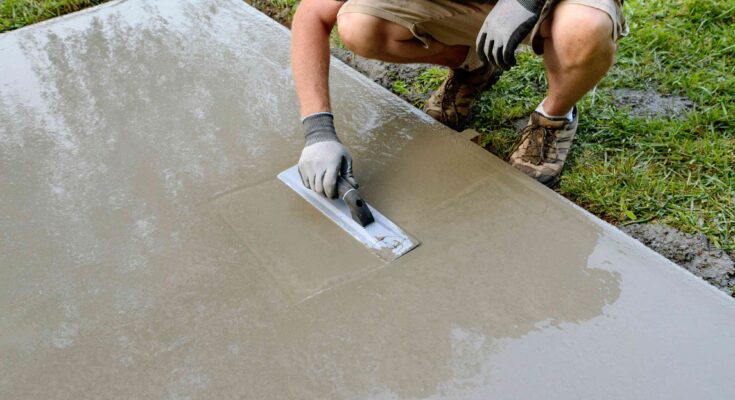As either a contractor or DIY enthusiast, understanding concrete and its properties is vital for successful project execution.
Understanding concrete’s chemistry and behaviour can help prevent issues during installation, or mitigate potential ones after completion. This guide to concrete will give a basic introduction to all its key concepts.
What is Concrete?
Concrete is a composite material composed of rock, gravel and sand bound together by fluid cement that hardens with age. Concrete can be used to build infrastructure like roads and dams as well as building materials like walls and floors. Concrete slabs Melbourne is a versatile building material with numerous applications.
Concrete can be created using various ingredients, but its basic composition includes stone (rock, gravel and sand), portland cement and water. When mixed together they react with each other to form a paste that binds aggregate together through hydration; this process is known as setting.
Concrete comes in four primary forms, each offering specific applications and properties. Most concrete sold is sold as ready-mix, pre-mixed in trucks with rotating drums before delivery to construction sites in familiar trucks with similar drums – this form accounts for three-fourths of all usage! Other types include precast concrete, poured-in-place concrete and self-consolidating concrete. Whatever its form of production may be, concrete remains one of the world’s most widely-used construction materials.
How to Mix Concrete
Concrete can be used in numerous DIY projects around the home. Mixing your own concrete is easy, and will stand the test of time if done right.
Mistakenly adding too much water when mixing concrete is one of the most frequent errors made. Water makes for a workable mix, but too much can weaken it and produce an unusable batch. One effective way of avoiding this error is using a measuring bucket instead of pouring directly from your tap.
Dust masks and eye protection should also be worn while mixing concrete, as the caustic cement powder can burn skin and eyes if inhaled directly. A tarpaulin should cover your workspace to avoid concrete spilling onto floors that harden after curing; using a brick trowel will also make stirring simpler and help ensure all material has been combined.
What’s in a Concrete Mix?
Concrete is composed of water, rock (aggregate) and Portland cement in powder form mixed together and applied accordingly to form an extremely hard and resilient substance known as concrete. When mixed and poured properly, these ingredients combine into what we know today as “concrete.”
Concrete mixes are created to meet specific technical specifications for construction projects, such as strength, viscosity, set time and other physical properties of wet concrete. Additives known as admixtures may be added to a mixture to achieve these goals.
To speed the setting time of concrete, chloride accelerators like calcium chloride may be added. Admixtures may also help improve quality by reducing permeability or adding desirable qualities to the finished product, so it is crucial that construction project requirements be discussed with a ready-mix supplier prior to specifying their concrete mix; they will help determine which combination of cement, sand and gravel would work best.
How to Pour Concrete
Pouring concrete for patio, driveway or foundation slab projects is simple for a DIYer to accomplish on their own. All it requires is an unobstructed day with all of the appropriate tools at your disposal as well as these seven steps to follow.
Prepping the pour site is of utmost importance. This involves clearing away sod, grass, rocks, debris and dirt from the area exposing bare earth, then compacting a base of gravel to reduce frost heave risk. Earth moving equipment may also prove useful for larger projects.
Once your area is ready, attaching a 2×12 board with stakes around its perimeter can help create an accurate mason line. Make sure the board is level, aligned to your mason line, and secure every two feet as the concrete pours. Hammer stakes at regular intervals to monitor for any movement as the concrete sets.
Once your concrete has set, use a straight 2×4 to help smooth its surface. A magnesium hand float may also come in handy. After finishing up with that process, rinse all equipment immediately in order to prevent residue hardening.




